OVERVIEW
Psilocybin mushrooms (aka “magic mushrooms” or “shrooms”) are fungi that contain psilocybin, a naturally occurring psychedelic compound. More than 180 species of mushrooms contain psilocybin or its derivative psilocin. Psilocybin mushrooms have a long history of use in Mesoamerican spiritual and religious rituals, and are one of the most popular recreational psychedelics in the U.S. and Europe.
Psilocybin mushrooms have been used in therapeutic settings to treat a variety of ailments and disorders including cluster headaches, obsessive-compulsive disorders, anxiety, depression, and addiction.
While psilocybin mushrooms have been decriminalized in two North American cities (see “Legality” for details) they are currently illegal and categorized as a Schedule I controlled substance in the U.S. Recently, however, the FDA and DEA have allowed a number of small, highly controlled human studies on their potential for use in medical and psychiatric settings.
Interested in microdosing psilocybin mushrooms? Join our microdosing course to optimize your experience
EFFECTS
02
Psilocybin mushrooms can be ingested in their whole form. They’re typically dried and most everyone agrees they don’t taste good. An alternative method is to brew psilocybin mushroom tea. Some people like to put the mushrooms in peanut butter or Nutella to mask the taste.
What to expect
A typical trip on a moderate dose of psilocybin mushrooms (1-2.5g) includes increased intensity of emotional experiences, increased introspection, and altered psychological functioning in the form of “hypnagogic experiences” — a transitory state between wakefulness and sleep. Brain imaging studies show that a psilocybin trip is neurologically similar to dreaming.
Perceptual changes such as illusions, synesthesia, emotional shifts, and a distorted sense of time are all characteristic of a psilocybin trip as well. These effects are typically felt an hour or so after orally ingesting a dose.[9]
You will begin to notice changes in your visual perception, such as halos around lights and objects, and geometric patterns when your eyes are closed.
Your thoughts and emotions will also begin to change. It’s not uncommon to have a sense of openness to thoughts and feelings that you tend to avoid in your everyday life. A sense of wonder and delight with the world around you, the people in your life, and your thoughts is also quite common, along with a sense of peace and connection with the world.
You may experience strong emotions, both good and bad. Try not to resist these feelings, but rather let them run their course. Many who do report strong negative emotions also report a simultaneous sense of calm acceptance and detachment, especially if they remind themselves that the emotions are temporary.
Physical side effects can vary from individual to individual and include changes in heart rate (up or down), changes in blood pressure (up or down), nausea, increased tendon reflexes, tremors, dilated pupils, restlessness or arousal, and troubles with coordinated movement.
One study also found that psilocybin can cause headaches that can last for up to a day in healthy individuals.[10] None of the subjects reported severe headaches, however, and psilocybin is actually used to treat a clinical condition called cluster headaches (see therapeutic uses section).
Phases of a Psychedelic Mushroom Trip
The four basic phases of a mushroom trip are ingestion, onset, the trip (peak), and the comedown. Each phase comes with its own set of perceptions and observations, with the peak — typically a couple hours after ingestion — resulting in the most intense sensory and psychological shifts. No matter the phase, it’s important to relax, and remember that what you’re experiencing is temporary, and there is nothing to fear. Check out this guide for more information on what to expect during a psilocybin mushroom trip.
Bad trips
Anyone curious about trying psilocybin mushrooms for the first time will inevitably worry at some point about having a “bad trip.” Dysphoric hallucinations, uncontrollable paranoia, and reckless behaviors are among the most common worries. Bad trips are possible, but the risks can be minimized by adhering to the 6S’s of the psychedelic experience. Being prepared and knowing your motivations before undertaking a psychedelic experience can help manage the risks.
Interactions with Other Drugs
- Coffee: Fun fact! This may be a match made in the cosmic stratosphere. Not only are there no known negative side effects of mixing the two; there is even a coffee producer in Denver who’s doing it intentionally.
- Marijuana: No known dangers, but also has the potential to enhance the psychedelic nature of the mushrooms.
- Adderall, Xanax, Zoloft: These are powerful psychoactive drugs, the side effects of which are largely subjective. If regularly taking any of these substances, psychedelic use should be approached with extreme caution.
EFFECTS BY DOSE
NOTE: Effects listed below aren’t meant to be comprehensive, particularly at the lower dose ranges. They may be subject to change as more reliable, more widely representative data become available.
These dose ranges are for Psilocybe cubensis mushrooms. They may apply to other psilocybin-containing species, but some (e.g. P. semilanceata) are more potent on average.
Microdose (0.05-0.25 g)
- Mood enhancement
- Decreased stress
- Emotional stability
- Mindfulness, presence, and peace
- Openness and self-forgiveness
- Increased empathy and sociability
- Conversational fluidity
- Alleviation of persistent conditions such as depression, anxiety, ADD/ADHD, PTSD
- Increased motivation (e.g. to make positive lifestyle changes)
- Increased focus/productivity
- Increased flow states
- Clearer, more connected thinking
- Improved memory
- Enhanced senses
- Enhanced appreciation for music, art, etc.
- Increased creativity
- Spontaneity
- Easier meditation
- Increased enjoyment of physical activity and everyday tasks
- Relaxation and increased awareness of body
- Enhanced athletic endurance
- Increased energy overall (without anxiety or a subsequent crash)
- Amplification of mood, positive or negative
- Slight sedative effect
- Possible manic states
- Potentially increased neuroticism
Mini-dose (0.25-0.75 g)
- Mood enhancement, mild euphoria or excitement
- Mindfulness, presence, and peace
- Openness and self-forgiveness
- Introspective insights
- Alleviation of persistent conditions such as depression, anxiety, ADD/ADHD, PTSD
- Increased motivation (e.g. to make positive lifestyle changes)
- Increased flow states
- Clearer, more connected thinking
- Enhanced senses
- Enhanced appreciation for music, art, etc.
- Increased creativity
- Spontaneity
- Easier meditation
- Increased enjoyment of physical activity and everyday tasks
- Relaxation and increased awareness of body
- Increased energy in waves
- Mild body high
- Amplification of mood, positive or negative
- Preference for introspection over socializing
- Increased sensitivity to light
- Very mild visuals, if any
- Possible manic states
- Potentially increased neuroticism
- Difficulty focusing or thought loops
- Difficulty with some cognitive tasks
- Anxiety, agitation, or restlessness
- Difficulty or discomfort socializing
- Frustration at dosage (too high to be comfortable, too low to be “recreational”)
Museum dose (0.5-1.5 g)
- Mood enhancement, euphoria or excitement
- Mild to moderate visuals (e.g. “breathing” environments)
- Increased empathy
- Conversational fluidity
- Introspection
- Increased flow states
- Enhanced senses
- Enhanced appreciation for music, art, etc.
- Increased creativity
- Spontaneity
- Increased enjoyment of physical activity and everyday tasks
- Finding otherwise mundane things funny or interesting
- Enhanced athletic endurance
- Moderate body high
- Clear come-up, peak, and come-down
- Amplification of mood, positive or negative
- Altered perception of sound
- Time dilation or contraction (time passing more slowly or quickly)
- Increased sensitivity to light
- Pupil dilation
- Difficulty focusing or thought loops
- Difficulty with some tasks
- Difficulty or discomfort socializing
- Frustration at dosage (at lower end)
Moderate dose (2-3.5 g)
- Strong euphoria or excitement
- Sense of peace
- Mystical experience and feelings of wonder
- Life-changing introspective or philosophical insights
- Increased flow of ideas
- Increased creativity
- Enhanced senses
- Enhanced appreciation for music, art, etc.
- Finding otherwise mundane things funny or interesting
- Strong body high
- Clear come-up, peak, and come-down
- Amplification of emotions, whether good or bad
- Open- and closed-eye visuals (e.g. patterns, auras)
- Synesthesia
- Time dilation or contraction (time passing more slowly or quickly)
- Sedation
- Unusual physical sensations
- Sensitivity to light
- Wide pupil dilation
- Compulsive yawning
- Confusion
- Disorientation
- Fear and anxiety (“bad trip” experiences)
- Difficulty with cognitive tasks
- Dizziness
- Nausea
Mega dose (5+ g)
- Strong euphoria or excitement
- Mystical experience and intense feelings of wonder
- Life-changing introspective or philosophical insights
- Ego death
- Increased flow of ideas
- Increased creativity
- Enhanced senses
- Finding otherwise mundane things funny or interesting
- Very strong body high
- Clear come-up, peak, and come-down
- Amplification of emotions, whether good or bad
- Very strong open- and closed-eye visions (e.g. memories coming to life)
- Visual, auditory, tactile hallucinations
- Synesthesia
- Time becoming meaningless
- Thought loops
- Sedation
- Unusual physical sensations and altered perception of physical form
- Sensitivity to light
- Very wide pupil dilation
- Compulsive yawning
- Confusion
- Disorientation
- Compromised motor functions (sitter recommended!)
- Strong fear and anxiety (extreme “bad trip” experiences)
- Extreme difficulty with cognitive tasks
- Dizziness
- Nausea
- Light-headedness
- Headaches
POTENTIAL BENEFITS
Psychedelic mushrooms have a longstanding, profound, and storied background among the many cultures that have historically used them. Today, the benefits of these powerful little fungi are being recognized in a big way. Currently, studies into the vast and multifarious use of psychoactive mushrooms are being conducted across the United States and abroad. One such study, published in the Journal of Psychopharmacology, found that, “a single dose of psilocybin produced substantial and enduring decreases in depressed mood and anxiety along with increases in quality of life […]. Additionally, the mystical and profound experiences that so many have experienced since psilocybin entered the American psychedelic lexicon in the 1960s, are now beginning to be tested and explored in mainstream medical science. The results are promising and compelling, and paint a substantiated, positive, symbiotic picture of mushrooms as a powerful healer.
Specifically, clinical trials have been, and are currently, being conducted in the United States and abroad which involve patients dealing with life-threatening cancer. These trials mainly seek to understand the efficacy of high dose psilocybin, administered in therapeutic environments, as a tool for reducing the psychological stress and anxiety that often accompanies a life-threatening diagnosis. The results so far have been promising. Under double-blind conditions, not only has a single, high-dose of psilocybin been shown to reduce symptoms of psychological distress among the terminal patient groups; the effects have been substantial and enduring.
Additionally, there is a growing body of research which suggests that part of why psilocybin is so effective is that it impacts neuroplasticity. That is, the brain’s ability to learn and grow and change.
Optimize your microdosing efforts
Do you worry about taking too much, not measuring correctly, or losing control of your experience?
Enroll in our online microdosing course to have a safe, effective, and valuable microdosing experience.
PERSONAL GROWTH
03
In early trials where psychedelics were given to healthy adults under supportive conditions, many participants reported lasting beneficial changes in their personality, their behavior, and their values and attitudes.[25], [26] Anecdotal reports in lieu of systematic studies have since corroborated these initial findings as people often report a greater appreciation of music, art, and nature along with more tolerance for others and increased creativity and imagination after a psilocybin mushroom trip.
More recent studies have also mirrored these early findings. About 40% of participants in laboratory studies of psilocybin reported positive, long-term changes in aesthetic experience and their relationship with nature.[27]
Research in 2011 found that more than a year after a single experience with psilocybin mushrooms, personality measures of openness remained significantly elevated in study participants. The researchers speculate that a mushroom trip’s mystical experience is likely the key to such enduring changes.
They define a mystical experience as “feelings of unity and interconnectedness with all people and things, a sense of sacredness, feelings of peace and joy, a sense of transcending normal time and space, ineffability, and an intuitive belief that the experience is a source of objective truth about the nature of reality.”
Interestingly, the more intense the mystical experiences a person reports on a psilocybin trip, the greater the positive, long-term changes they see.[28]
These subjective effects — such as feelings of interconnectedness — of psilocybin mushrooms are likely a result of their ability to decrease the interconnectivity of integration hubs in the brain.[29] That is, psilocybin allows for more “cross talk” between brain regions that are typically kept separate. Researchers speculate that this enables a state of “unconstrained cognition.” Many of the same brain activity patterns are also observed during various states of meditation as well. For more, see our post on psychedelics and meditation.
Recent research has shown that psilocybin can be used to enhance spiritual practice. The large study recruited 75 participants, and engaged them on a six-month spiritual course involving meditation, awareness, and self-reflection. During the course, participants were given either a low or high dose of psilocybin. At the end of the six months, the participants given the high dose of psilocybin showed significantly greater improvements in measures of spirituality such as interpersonal closeness, life meaning, death transcendence, and forgiveness.[34]
THERAPEUTIC USE
04
Several preclinical trials in the 1960s and 70s suggested a promising role for psilocybin and other psychedelics in treating issues including cluster headaches, mood disorders, and addiction.[18]
After the federal government reclassified psilocybin as a Schedule I drug in the 1970s, research on its therapeutic effects became virtually non-existent, up until recently. Anecdotal accounts of psilocybin’s therapeutic effects have finally caught the attention of medical professionals and regulators. Today, research is being funded and conducted by organizations such as MAPS, The Beckley Foundation, and The Johns Hopkins Center for Psychedelic & Consciousness Research.
Psilocybin in the Treatment of Cluster headaches
More intense but shorter in duration than migraines, cluster headaches are often described as the most painful and disruptive type of headache. Attacks at night may be more painful than those that occur in the daytime, but both interfere significantly in a person’s life.
To date, no systematic studies have been published that describe psilocybin’s potential to treat cluster headaches, but myriad anecdotal reports have caught the attention of the medical community. In the mid-2000s, medical professionals began taking notice of psilocybin and LSD as possible treatments for cluster headaches after some of their patients reported remission of their condition following recreational psychedelic use (and subsequent self-medication).[19]
One recent survey reported that psilocybin could be a more effective treatment of cluster headaches than currently available medications, with nearly 50% of sufferers reporting psilocybin as a completely effective treatment. [20]
Psilocybin in the Treatment of Mood and Anxiety Disorders
Anecdotal evidence has pointed toward psilocybin (and other psychedelics) as a treatment for mood disorders such as depression and anxiety. Psychologist and psychedelic researcher Dr. James Fadiman has been collecting anecdotes for several years, the overwhelming majority of which are positive.
The federal government has allowed some small, highly controlled studies to be conducted on the therapeutic potential of psilocybin on mood disorders. In 2011, a pilot was conducted to test the effects of psilocybin on depression and end-of-life anxiety in terminal cancer patients.[21] Patients in this study had advanced-stage cancer and a clinical diagnosis of stress or anxiety related to their disease. The researchers observed significant improvements after psilocybin treatment on measures of depression and anxiety up to six months after the trial. This study was eventually granted Phase II status by the FDA.
Recently, a prestigious research group in London carried out a study that suggests psilocybin could be used to treat major depression.[31] Twelve patients were given two doses of psilocybin (one low, and one high), combined with psychological support. One week after the second dose, depression scores were significantly reduced in nearly all patients, with eight of the 12 showing no symptoms of depression. Three months later, five patients were still depression-free, and four of the remaining seven had a reduction in the rating of their depression from “Severe” to “Mild or Moderate.”
Psilocybin treatment has also been shown to successfully reduce symptoms of obsessive compulsive disorder (OCD) in a small study of patients who didn’t respond to conventional serotonin reuptake inhibitor (SRI) drug therapy.[22] In this study, all patients showed a reduction in OCD symptoms ranging from 23% to 100%.
Psilocybin in the Treatment of Addiction
The “classic psychedelics” were used in preclinical trials to treat addiction in the 1950s and 60s with promising results, but again, once many of these psychedelics were made illegal in the U.S. and most of Europe, research into the using them in a therapeutic context came to a virtual halt. But recent years have seen a resurgence in using psilocybin and other psychedelics as therapeutic tools to treat addiction.
In a 2015 study, psilocybin, as part of an assisted treatment plan, showed promise in treating alcoholism.[23] Significant reductions in drinking and abstinence from drinking were reported after psilocybin administration as part of a treatment program.
Psilocybin also appears to be a potential tool in helping people quit smoking tobacco. In a recent trial, two to three treatment sessions with psilocybin as part of a larger cognitive-behavioral therapy program for smoking cessation had an 80% success rate with smoking cessation in study participants (12 out of 15 subjects).[24] By comparison, conventional smoking cessation method success rates — gum, patches, cold turkey, etc. — have about a 35% success rate.
Does Psilocybin Re-wire the Brain?
Some researchers are beginning to theorize that many of psilocybin’s beneficial effects on mental health conditions may be due to its ability to “reset” a control system in the brain. The Default Mode Network (DMN) has been linked to depression and other mood disorders when overactive. Psilocybin has been shown to dramatically reduce the activity of the DMN,[32] which has recently been linked to its anti-depressant effects.[33]
Read more about the relationship between psychedelics and the DMN here.
LEGALITY
05
Psilocybin is illegal in most countries, but its legal status is open in some places. In the Netherlands, due to a legal loophole, it’s possible to purchase “magic truffles” that contain psilocybin without breaking the law. Psilocybin is legal at least in some form in Brazil, the British Virgin Islands, Jamaica, and the Netherlands.
In the U.S., while illegal at the federal level, psilocybin mushrooms were deemed legal to grow and possess (as long as they’re not dried) in New Mexico in 2005. In 1978, the Florida supreme court ruled that harvesting wild psilocybin mushrooms was effectively legal until the state legislature says otherwise. No Florida laws have been passed since regulating the harvest of wild-picked mushrooms containing psilocybin.
On May 7, 2019, citizens of Denver, Colorado voted to decriminalize psilocybin mushrooms.[35] This means it’s no longer a punishable offense for adults aged 21 and older to possess them for personal use. It doesn’t make them legal, though. If you’re caught selling or otherwise distributing psilocybin mushrooms, and possibly even growing them, you could still face criminal charges. The law remains unchanged for the rest of Colorado—at least for the time being.
In June the same year, Oakland, California followed suit with an amendment of its own: Council members voted unanimously to decriminalize not just psilocybin mushrooms but all “entheogenic plants” containing indoleamines, tryptamines, and phenethylamines. As in Denver, this only applies to adults aged 21 years and older. And it doesn’t include synthetic substances derived from plants or fungi, such as LSD. However, unlike in Denver, it also decriminalizes (or rather deprioritizes for law enforcement) the cultivation and distribution of the specified psychedelics—which include psilocybin mushrooms.[36][37]
With the exception of three states, psilocybin mushrooms spores are perfectly legal to possess in the U.S. as the spores do not contain psilocybin or psilocin, the chemicals that are specifically regulated by federal law. However, although the spores are legal, growing mushrooms from the spores is still considered illicit activity.
PHARMACOLOGY
06
Psilocybin is the active psychedelic ingredient in psychedelic mushrooms. The threshold dose for feeling the effects from dried mushrooms is typically in the 0.2-0.5g range, though it varies across individuals. A moderate dose in the 1-2.5g range, taken orally, typically produces effects that last from three to six hours.
Psilocybin is metabolized into psilocin, both of which appear to be equally active in producing psychedelic effects. Psilocybin is about 100 times less potent than LSD and 10 times less potent than mescaline.
Psilocybin and its metabolite psilocin primarily interact with serotonin receptors in the brain. It has an especially high affinity for the 5-HT (serotonin) 2A subtype receptors. In rodents, psilocybin shows strong interaction with receptors in hub regions of the brain that integrate sensory experiences. This could, therefore, explain effects such as synesthesia (mixing sensory modalities; e.g., hearing colors, tasting sounds) and altered sensory experiences during mushroom trips.
Toxicology
Psilocybin is well-tolerated among healthy individuals. Hormone levels, liver function and toxicity, and blood sugar all appear to be unaffected by its use. Complications that have been reported appear to arise in vulnerable individuals under uncontrolled conditions and at high doses. Adverse effects, like “bad trips,” can almost always be managed with interpersonal support and without pharmaceutical intervention.[7]
Interactions
Not much data exists concerning adverse drug-drug interactions with psilocybin. Anecdotal reports from emergency rooms suggest abstention from alcohol while tripping. In fact, it’s best to abstain from alcohol while using any psychedelic.[8]
Since psilocybin is a potent serotonin agonist, it’s best to avoid using it while on any medications that alter the serotonin system, such as Prozac and other SSRI antidepressants.
HISTORY & STATS
07
Brief history
Archaeological evidence from the Sahara desert suggests that humans have been using psychedelic mushrooms for 7,000 years or more.[1] Mushrooms are represented in prehistoric art across many different geographic regions. In most cases, they’re thought to be religiously symbolic, often in the context of rights of passage ceremonies. If our ancestors did use mushrooms, such a powerful experience almost certainly would have influenced prehistoric culture, from art to religion to social values that regulated everyday life.
Some have gone even further. Terence McKenna’s “Stoned Ape Hypothesis” suggests that early humans or pre-human hominids ingested mushrooms, leading to evolutionary benefits including advancements in intelligence. It should be noted that the scientific community regards this hypothesis with skepticism because some of its assumptions lack convincing evidence.
Extensive accounts of psilocybin use in pre-Columbian history comes from the Mayan and Aztec cultures of Mesoamerica, namely in Mexico and Guatemala. After conquering these areas in the 15th and 16th centuries, the Spanish forbade psychedelic mushroom use by indigenous peoples, regarding it as a savage and uncivilized cultural practice. Despite this, the indigenous shamans ignored Spanish law in secret for over 400 years to preserve their shared cultural heritage with these mushrooms.
The first reliable account in the West of “intoxication” with psilocybin mushrooms came in 1799 when four children were accidentally fed Psilocybe semilanceata, a species of psychedelic mushroom.
The famous Swiss chemist Albert Hofmann (who synthesised LSD) first isolated psilocybin in the lab in 1957 from Psilocybe mexicana, a species of mushroom found primarily in Central America. A year later, it was produced synthetically for the first time.[2]
Gordon Wasson, former vice president of J.P. Morgan & Company, apparently had a fascination with psilocybin mushrooms that became an obsession. In 1955 he traveled to Oaxaca, Mexico, to meet mushroom shaman Maria Sabina, a member of the indigenous Mazatec Indian tribe, who introduced him to psilocybin mushrooms. On his first mushroom trip, he reported feeling as if his soul had been scooped out of his body. [3]
Wasson effectively kickstarted the psychedelic mushroom movement in the West when, in 1957, Time Magazine published his photo essay, “Seeking the Magic Mushroom,” in which he detailed his experiences.
After reading of Wasson’s experiences and then traveling to Oaxaca to experience psilocybin mushrooms for themselves, Timothy Leary and Richard Alpert, researchers at Harvard University, founded the Harvard Psilocybin Project which, of course, got them fired shortly thereafter. So they did what any jobless, charismatic academics would have done in 1962: they started a psychedelic movement. Psilocybin mushrooms were quickly adopted into the 1960s counterculture.
In 1971, psilocybin was listed in the UN’s Convention on Psychotropic Substances [4] as a Schedule I drug in the U.S., making it illegal for all purposes. However, psilocybin mushrooms were not part of the UN convention, which, to this day, allows countries who have signed the convention (essentially a treaty) to regulate mushrooms that naturally contain psilocybin as they see fit.
Today, psilocybin mushrooms are illegal in most countries, although there are exceptions.
Over the past few years, regulatory bodies such as the DEA and FDA have loosened rules about using psilocybin – more so than any other psychedelic – in controlled research trials. Exciting new findings on psilocybin as a therapeutic tool and for personal/spiritual development are emerging.
Current usage
- Psilocybin mushrooms are the most commonly used psychedelics among people ages 34 and younger.[5]
- A 2012 study of 409 university students in the northeast U.S. found that nearly 30% had tried psilocybin mushrooms at least once.[6]
- A report from data collected in the 2010 National Survey on Drug Use and Health (NSDUH) shows that, compared to other drugs, psychedelics— which, according the NSDUH, includes LSD, PCP, peyote, mescaline, psilocybin mushrooms, and MDMA — were used by about 1.2% of the population of people 12 years of age and older within the past month. Interestingly, “psychotherapeutics” (such as prescription antidepressants and antipsychotics) are reportedly used illegally at a rate nearly six times that of psychedelics.
- Surveys in 12 EU member states found that people aged 15–24 years old use of psilocybin mushrooms ranges from less than 1% to 8%.
- In the UK, almost 340,000 people aged 16–59 had used psilocybin mushrooms in the last year as of 2004/2005, right before they were made completely illegal in the UK.
Types of Mushrooms
Of the 180+ known types of psychedelic mushrooms, the most widely known and consumed species are:
- Psilocybe cubensis: The most well-known and widely cultivated of psilocybin mushrooms.
- Psilocybe cyanescens: Less well-known compared to psilocybe cubensis, but no less cultivated, smaller, and slightly more psychoactive.
- Psilocybe azurescens: Discovered by world renowned mycologist Paul Stamets in the mid-90s, it is likely the most potent psilocybin mushroom in the world.
- Amanita Muscaria (Fly Agaric): A red and white mushroom containing the psychoactive elements ibotenic acid and muscimol — was regularly used in shamanic tradition by indigenous Siberian and Baltic cultures.
How to Identify a Psychedelic Mushroom
Of course, when beginning, heed caution. There are many types of similar-looking mushrooms with varying levels of toxicity. If you know what to look for, choosing a deadly mushroom is unlikely, but it’s important to be aware of what you’re doing. Psilocybe cubensis grows in abundance in tropical zones throughout the world. They are classic stubby-stemmed parasol-shaped mushrooms with predominantly light-to-golden-brownish caps that are bulbous before fruiting, and flat and wide in diameter when fully mature. Psilocybe azurescens on the other hand, are endemic to the West Coast of the United States, appear slimmer and more convex. Read more about how to identify psychedelic mushrooms.
MYTHS
08
“Psilocybin mushrooms cause brain bleeding, stomach bleeding, and/or kidney failure”
A “bleeding brain” would be diagnosed as a stroke, hemorrhage, or aneurysm. There is no evidence of this ever happening after ingesting psilocybin mushrooms, nor is there any evidence to suggest that these mushrooms cause stomach bleeding. A 1981 report found that the two most common complications with mushroom use were dilated pupils and overly sensitive reflexes.[11] Other literature reviews have found no complications of mushroom use in healthy individuals.[12][13]
As for kidney problems, the issue is actually a mushroom identification problem. The psychedelic mushroom species Psilocybe semilanceata does not cause kidney issues, but mushrooms in the family Cortinarius are often mistaken for P. semilanceata, and are harmful to the kidneys.
“Shrooms make you go insane”
Researchers have drawn similarities between psilocybin mushroom trips and psychotic episodes like those found in schizophrenia, but in almost all cases, this is temporary (hence, the term “trip”).[14] Even people who are admitted to the emergency room after taking psilocybin mushrooms return to their normal physical and mental state within a matter of hours.[15] In fact, a recent large, population-wide study found a reduced likelihood of psychological distress and suicidality among those who use classic psychedelics such as psilocybin mushrooms and LSD.[16]
While there is no conclusive evidence suggesting that latent mental health problems can be exacerbated by psychedelic use, many scientists believe this is the case. [17] As such, if you have a history of mental illness (especially schizophrenia), you may want to avoid psychedelic drugs.
“Magic mushrooms are poisonous”
This depends on your definition of “poisonous.” If you categorize a chemical substance that induces an intoxicated state, alters your consciousness, and causes some physiological changes as poisonous, then sure, psilocybin mushrooms are poisonous. But if that’s the case, then all drugs are poisonous, including alcohol, tobacco, marijuana, and caffeine. A narrower definition of a poisonous substance, however, would not categorize psilocybin as such.
While mushroom poisoning from non-psychedelic species can cause serious physical illness and in rare cases death, psilocybin mushrooms are not toxic. Proper identification of mushroom species, therefore, is obviously critical.
Can psilocybin be detected in a drug test?
Psilocybin mushrooms and their metabolites are not included in most standard drug screens; however they are sometimes included in extended drug screens.[30]
Can psilocybin cause psychological trauma?
If you follow the 6S’s of psychedelic use, and avoid taking psychedelics if you have a family history of mental health issues, psilocybin will not cause psychological trauma.
Psilocybin can cause you to feel crazy for a short time (acute psychosis), known colloquially as a “bad trip,” if you don’t follow the 6S’s. Although there is no concrete evidence, some scientists suspect that psilocybin can cause latent mental health issues to surface.
How do I know if I have psilocybin mushrooms?
Many species of mushrooms contain psilocybin, and some look similar to poisonous mushrooms, so it’s important to identify your mushrooms correctly. Many species of psilocybin mushrooms are recognisable by their long thin stems and short cone-like caps.
Is it legal to grow psilocybin mushrooms?
In most countries, it is illegal to possess, buy, or grow psilocybin mushrooms. However, the spores are legal to buy in many places, as long as you don’t use them to grow mushrooms. Read our full article on the legality of psilocybin mushrooms.
How do I take psilocybin mushrooms?
Psilocybin mushrooms can be eaten whole, brewed in a tea, or cooked into food. A moderate dose is 1-2.5g, which can be weighed on a scale.
How do I microdose with psilocybin mushrooms?
Psilocybin mushrooms can be microdosed by ingesting around 0.2-0.5g, but everyone’s tolerance is different.
How does psilocybin tolerance work?
Taking a moderate dose of psilocybin will produce an immediate tolerance. If you take the drug again soon, it will have a weaker effect. You should wait at least three days between psilocybin doses.
Can I mix psilocybin with other drugs?
Psilocybin should not be mixed with Tramadol, as it can lead to serotonin syndrome. Be cautious if mixing psilocybin with cannabis, amphetamines, or cocaine. Click here for a detailed chart of safe drug combinations.
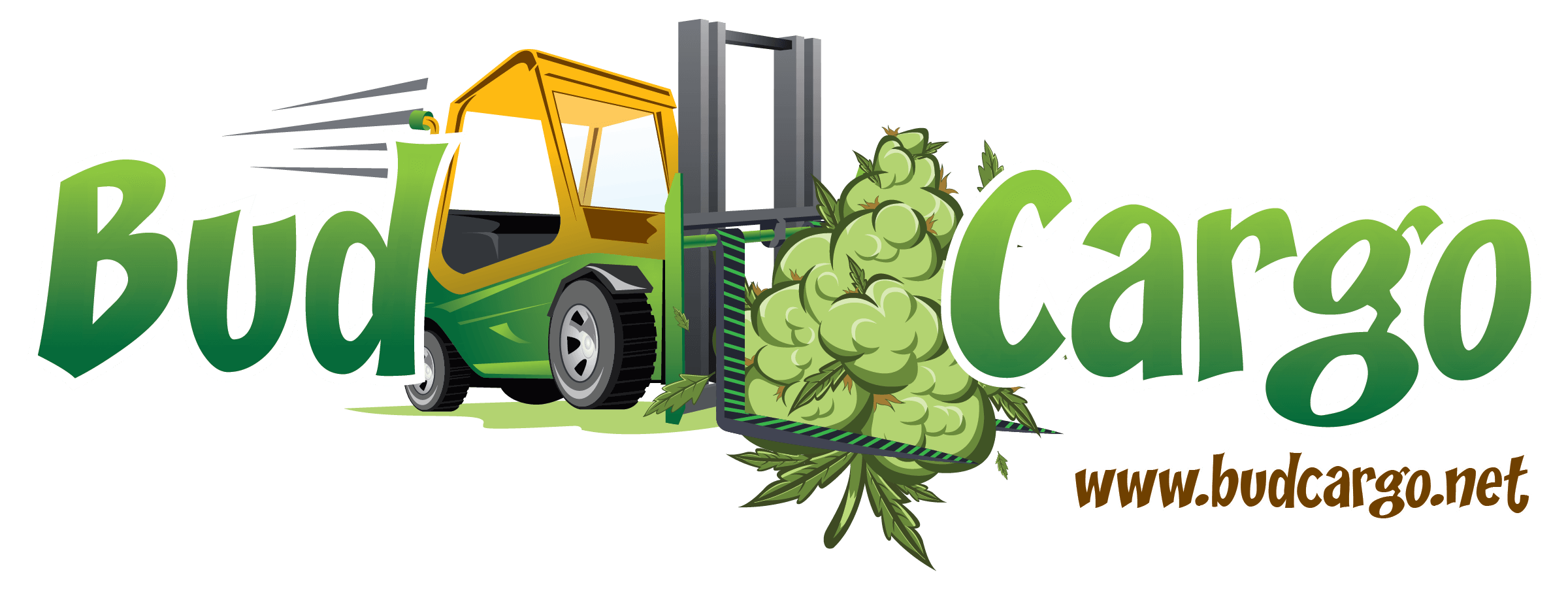

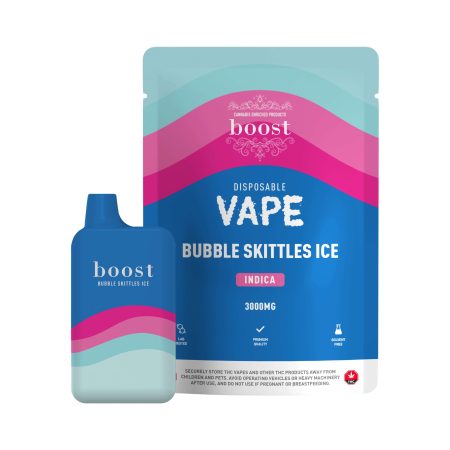
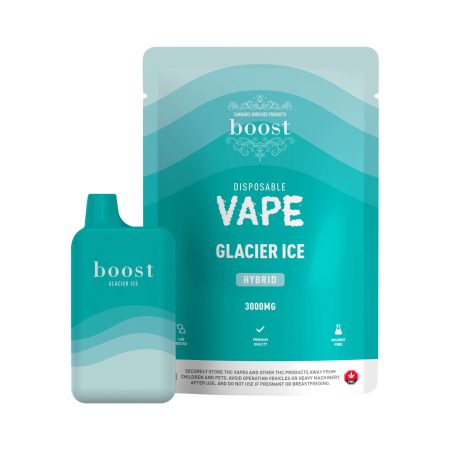
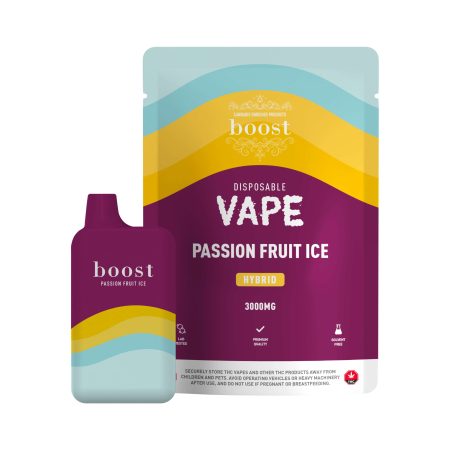

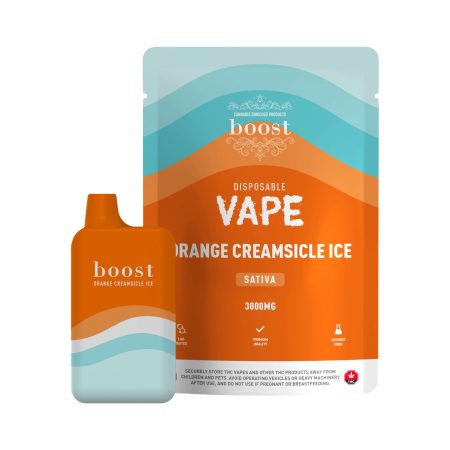
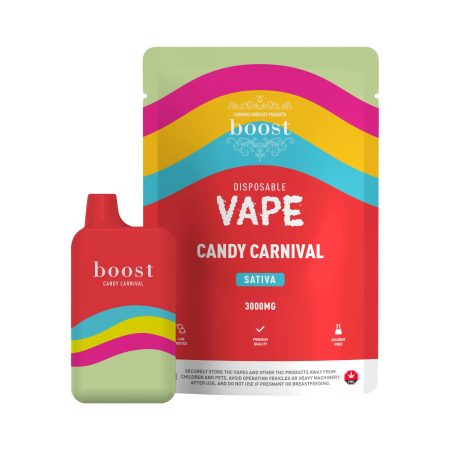
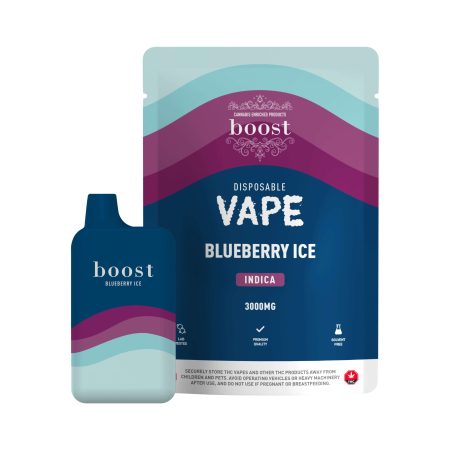

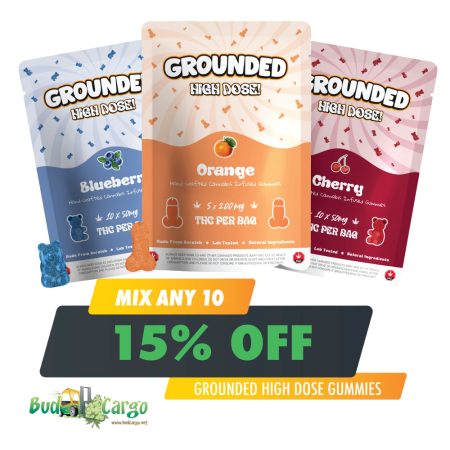
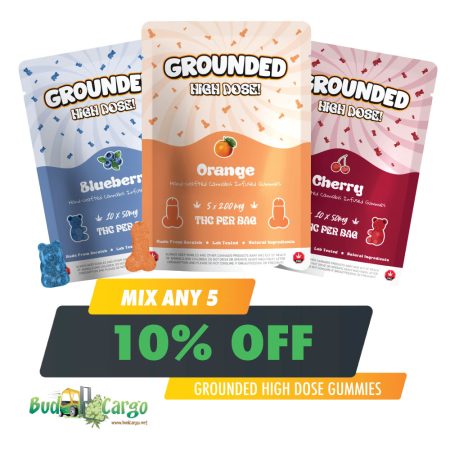
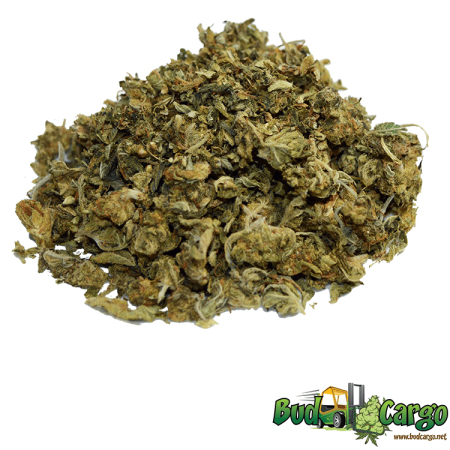
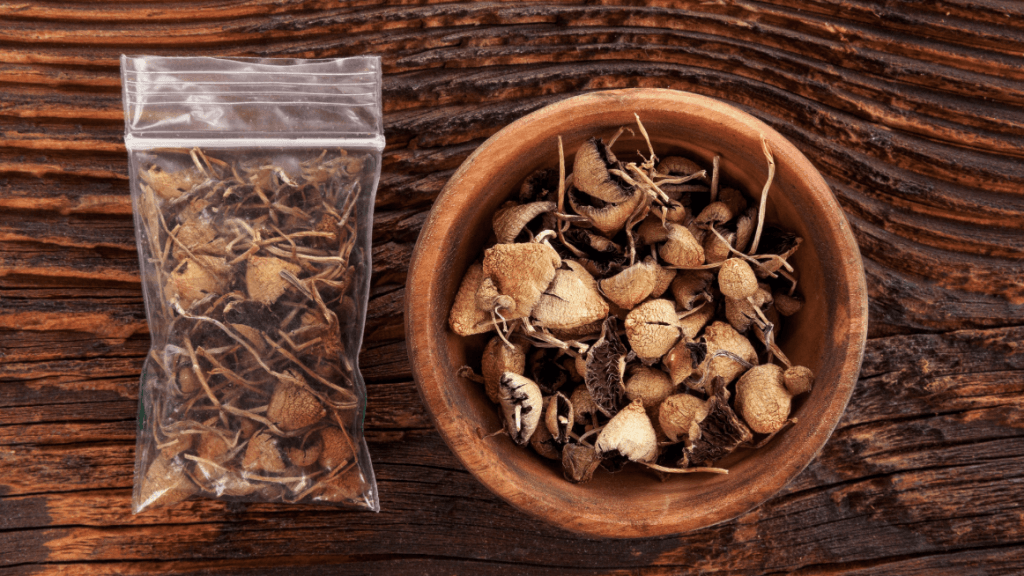

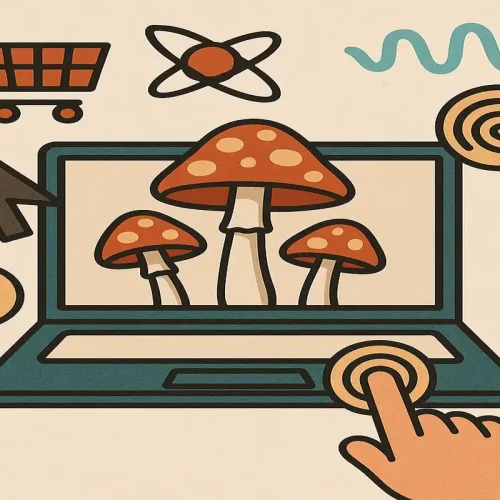
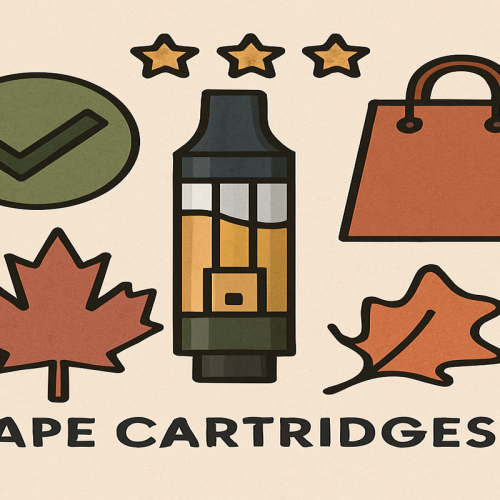

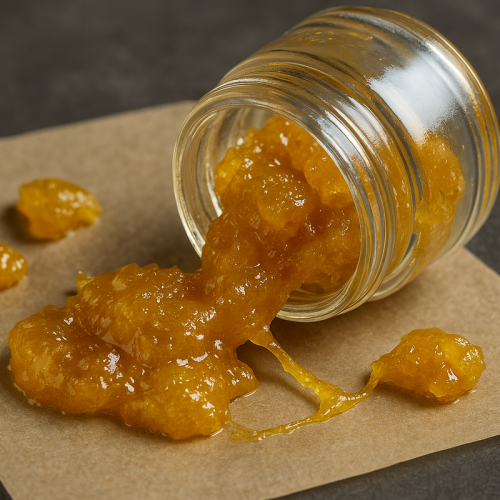
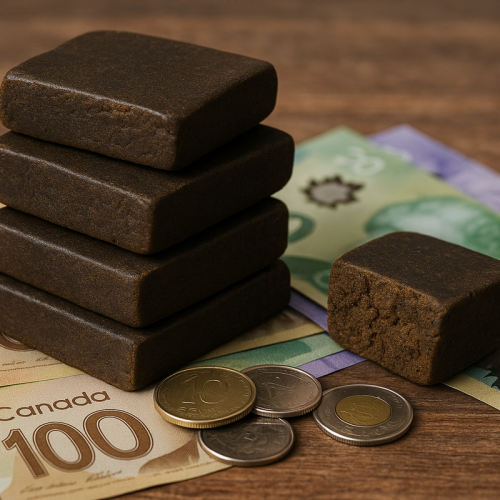




You must be logged in to post a comment.